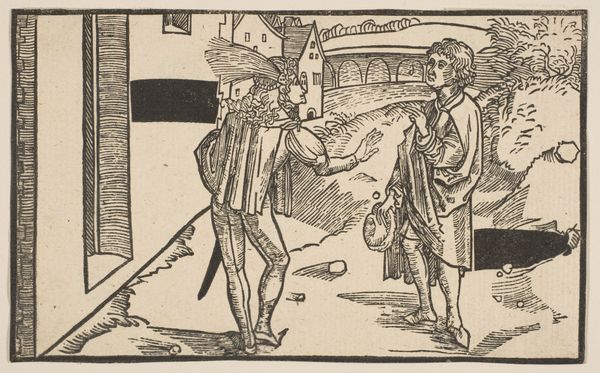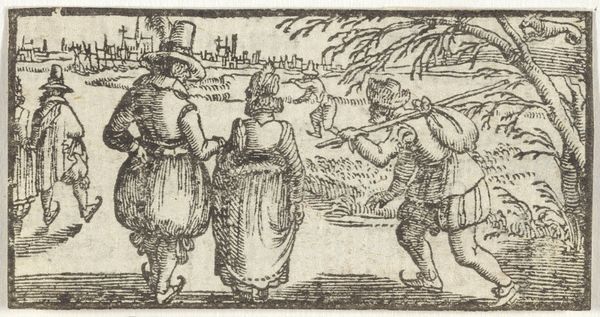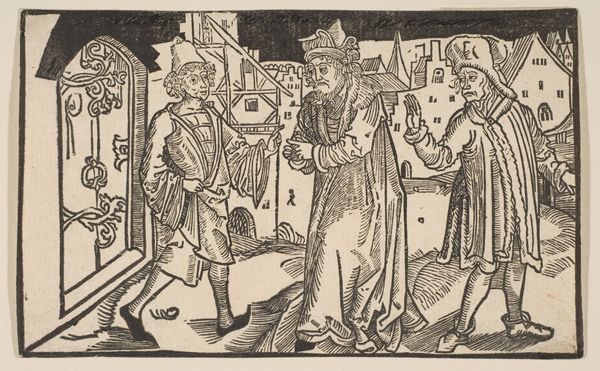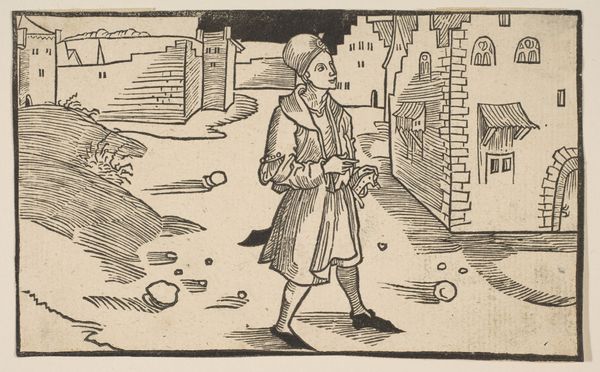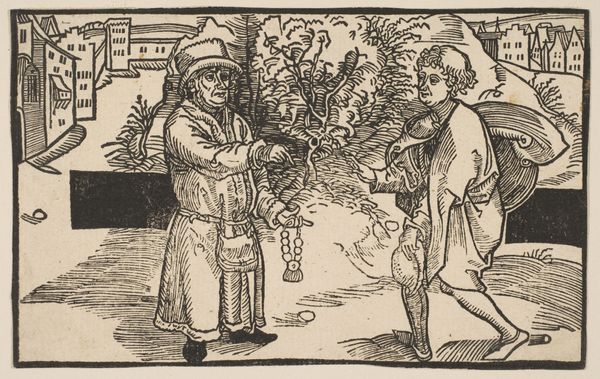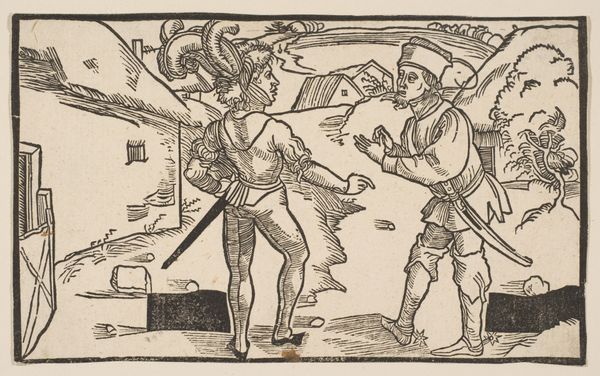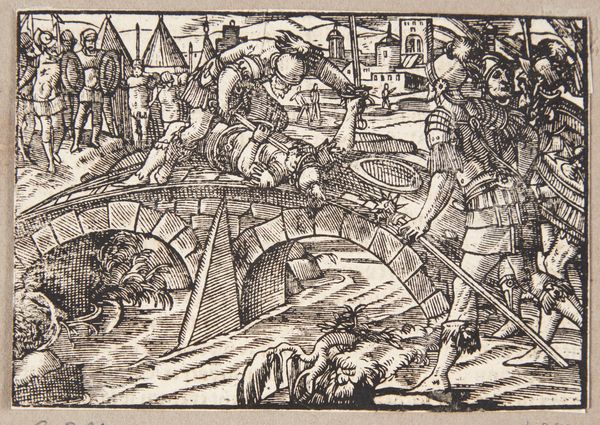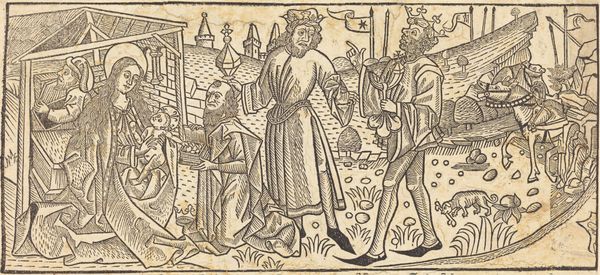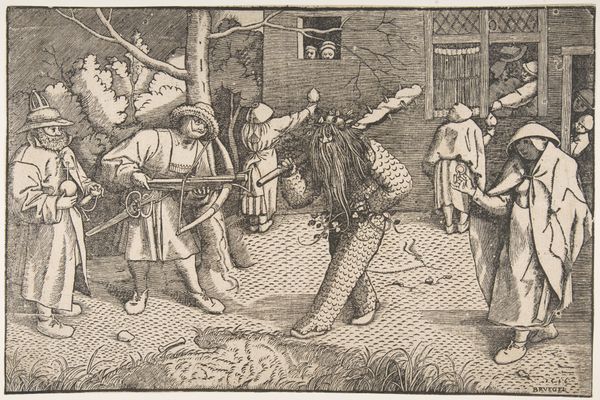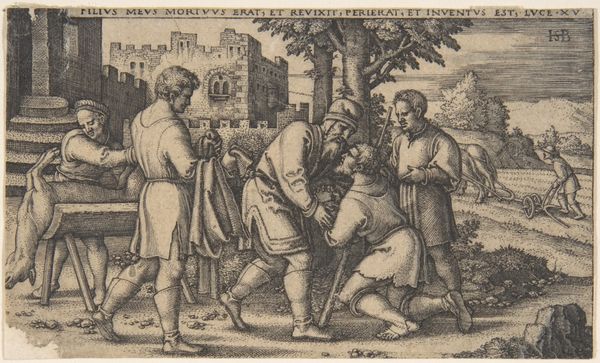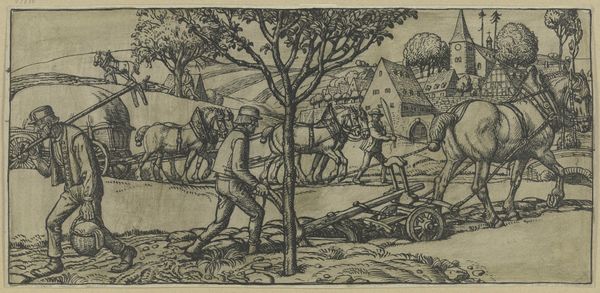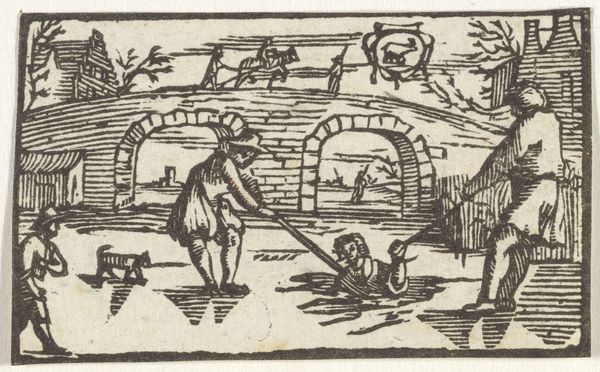
Andria, from The Comedie of Terence, 19th century reprint 1485 - 1528
0:00
0:00
drawing, print, ink, woodcut
#
drawing
#
medieval
# print
#
figuration
#
ink
#
woodcut
#
history-painting
#
northern-renaissance
Dimensions: sheet: 3 1/2 x 5 5/8 in. (8.9 x 14.3 cm)
Copyright: Public Domain
Editor: This woodcut print, “Andria, from The Comedie of Terence," is attributed to Albrecht Dürer, dating back to the late 15th or early 16th century. It’s quite small, but the composition—the stark contrast between the figures and background—creates such a dramatic effect. I find the setting very theatrical. What do you see in this piece, especially considering the context of its time? Curator: For me, this image really highlights the power of art as a form of social commentary and cultural dissemination. This wasn't simply an aesthetic choice; it was a strategic one, leveraging printmaking’s accessibility to challenge elite dominance over classical texts. Look closely—notice how the clothing styles, while inspired by classical antiquity, are still rooted in Northern European fashion. Editor: I hadn’t really thought of the clothing as a form of commentary. Curator: It makes you wonder, doesn’t it, who had access to these images and how they shaped the viewer's understanding of both the past and present. The Comedie of Terence would be familiar to wealthy educated individuals who would identify themselves with characters wearing specific articles of clothing. Think about it – what kind of statement would this imagery make at a time of immense social change? Editor: So it’s about questioning power, class, and the stories we tell about ourselves, through the ages? Curator: Exactly. It’s a visual argument about cultural ownership and who gets to participate in defining history. The print allowed new audiences to see, participate in, and critique those same historical stories. It brings a lot of modern concerns to the fore: decolonization, accessibility, democratization of art. Editor: I’ve never really thought about it in those terms, it opens a completely new viewpoint! Curator: Precisely, viewing art as an agent of societal and historical transformation helps us decode complex power dynamics embedded within what might seem like simple images.
Comments
No comments
Be the first to comment and join the conversation on the ultimate creative platform.
